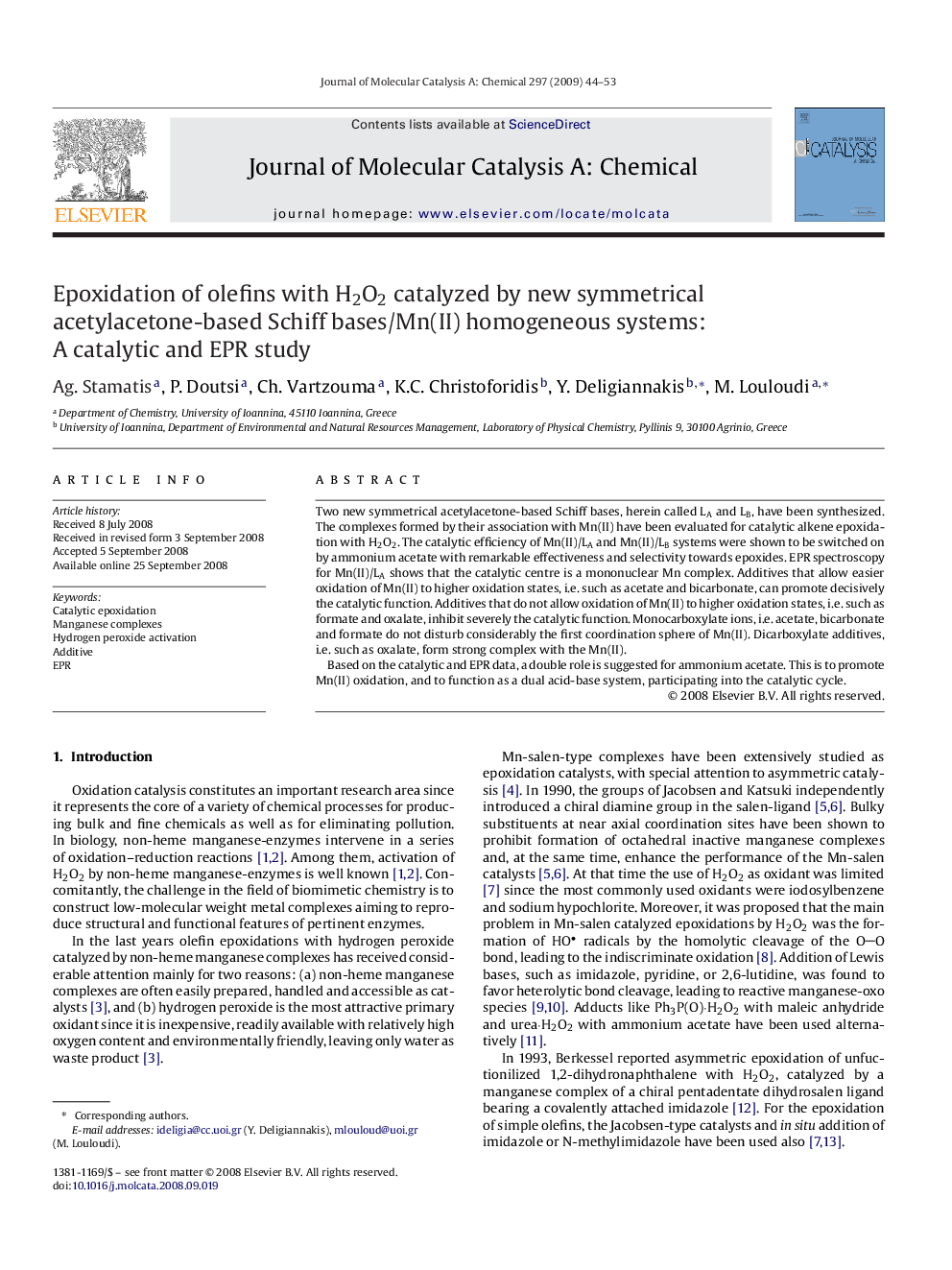| Article ID | Journal | Published Year | Pages | File Type |
|---|---|---|---|---|
| 67179 | Journal of Molecular Catalysis A: Chemical | 2009 | 10 Pages |
Two new symmetrical acetylacetone-based Schiff bases, herein called LA and LB, have been synthesized. The complexes formed by their association with Mn(II) have been evaluated for catalytic alkene epoxidation with H2O2. The catalytic efficiency of Mn(II)/LA and Mn(II)/LB systems were shown to be switched on by ammonium acetate with remarkable effectiveness and selectivity towards epoxides. EPR spectroscopy for Mn(II)/LA shows that the catalytic centre is a mononuclear Mn complex. Additives that allow easier oxidation of Mn(II) to higher oxidation states, i.e. such as acetate and bicarbonate, can promote decisively the catalytic function. Additives that do not allow oxidation of Mn(II) to higher oxidation states, i.e. such as formate and oxalate, inhibit severely the catalytic function. Monocarboxylate ions, i.e. acetate, bicarbonate and formate do not disturb considerably the first coordination sphere of Mn(II). Dicarboxylate additives, i.e. such as oxalate, form strong complex with the Mn(II).Based on the catalytic and EPR data, a double role is suggested for ammonium acetate. This is to promote Mn(II) oxidation, and to function as a dual acid-base system, participating into the catalytic cycle.
Graphical abstractNew homogeneous catalytic systems formed by association of Mn(II) with symmetrical acetylacetone-based Schiff bases have been evaluated for alkene epoxidation with H2O2. They are ammonium acetate-dependent. Based on catalytic and EPR data, it is suggested that ammonium acetate-additive promotes Mn(II) oxidation and probably functions as a dual acid-base system.Figure optionsDownload full-size imageDownload as PowerPoint slide
